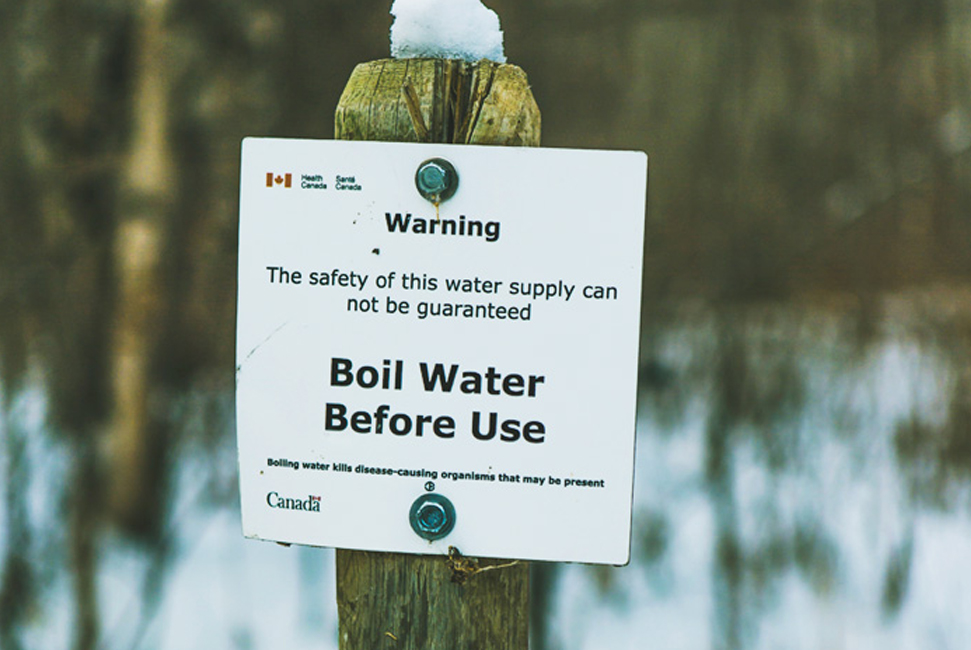Many of us are privileged to have constant access to clean drinking water. We only need to walk to the nearest tap or if we fancy a cup of tea we can turn on the kettle. Obtaining clean drinking water is a fairly mundane task that requires minimal effort on our part. This is not the case however for many communities around the world. Frances Mak explores new technologies to generate clean water.
Some communities without reliable access to clean water, near to where I live in Toronto, are the Indigenous peoples of Canada. They are not unique in this predicament of unreliable access to clean drinking water. This is why there is a constant effort to increase water accessibility to each corner of the world. Engineers have strived to refine and improve different solutions to this ongoing predicament. One such solution, developed by scientists at the University of Texas, is anti-bacterial hydrogel tablets.
Purifying water

Boiling water is a very common way to purify water. The high temperature kills bacteria, pathogens, and other organic matter that would be harmful when ingested. However, this process is energy and labour-intensive. Many of us are privileged that the water straight from our taps is safe to drink, and boiling water is as easy as a click of a switch on a kettle. This is not the case for many other communities around the world. Fuel isn’t easy to come by and the labour to start and maintain a fire is physically taxing and time-consuming.
Chemical disinfection of water is a popular alternative due to its low cost and high efficiency. This process uses chemicals such as chlorine, but this leads to disinfection by-products (DBPs) which are extremely problematic as they have lasting carcinogenic effects.
The key benefits of hydrogel tablets address issues in both water purification strategies. Placing a tablet into a water container requires minimal effort and has virtually zero energy input. On top of that, once it finishes the job, the tablet doesn’t produce any toxic by-products. It is a safer and more efficient option but like all solutions, it has its own set of caveats. For small quantities of water, this method is convenient, but for much bigger volumes of water, it’s not. The tablets may also be unaffordable to the communities that need them. And ultimately, if local water is heavily contaminated, proper infrastructure to filter the water is still needed.
The chemical process

These hydrogel tablets are more specifically anti-bacterial hydrogels. They have the ability to kill bacteria such as E. coli. They do this by releasing hydrogen peroxide, which destroys bacterial cell walls by disrupting their metabolism. In order to facilitate the release of hydrogen peroxide the tablet is composed of CatChit, a biopolymer used commonly for various biomedical applications. When the catechol group spontaneously oxidizes in response to the O2 in both the air and the water, hydrogen peroxide is produced as a by-product. Alongside this process, quinone-activated carbon particles speed up the bactericidal effect. As a whole, the anti-bacterial hydrogels have the ability to neutralize bacteria with a very high rate of efficiency (>99.999%). When tested, the tablets were able to disinfect a litre of river water in just an hour.
Who can this benefit

It is a basic human right to have access to clean water, a right that many communities don’t have. Many Indigenous communities in Canada still have long-term boil water advisories. Because the reserves are in remote areas, it is very expensive and incredibly difficult to get water transported. They also lack the finances to build and maintain a water system as the funds given by the Canadian government are not nearly enough.
In Pakistan, just getting access to any form of water, clean or not, is extremely labour-intensive. Women and children can travel for hours just to transport water from point A to point B. But even with all this effort, the water that is collected is contaminated by sewage which causes a multitude of health problems. There is no financial means or political focus on this issue which has led Pakistan to become a part of the top 10 countries with the lowest access to clean water.
Could hydrogel tablets meet this need?
This depends mostly on material cost and the product’s ability to be stored and transported. For hydrogel tablets, the material costs are low. The material abundance of chitosan is second to only cellulose as a biopolymer, both of which are extremely sustainable materials. The material is also easy to package. Collectively, this creates a viable solution to help communities that struggle to tackle their clean water problems.
However, current production is limited. Until further manufacturing infrastructure can be built, this product can treat only a fraction of demand. The location of manufacturing also matters. Unfortunately, many of these communities where this product is most relevant would not be able to manufacture it, so they would need import it. This creates a reliance on manufacturers and at the end of the day, this product is a temporary fix. The governments of these communities still need to address the root of the problem.
Next steps
Future plans for further innovation of these hydrogel tablets are in the works. The team is looking to give hydrogel tablets the ability to disinfect more types of pathogens and viruses, providing a deeper cleanse. They are also working on addressing metal ions and organic contaminants.
Read more about molecular science and engineering solutions for clean water:
